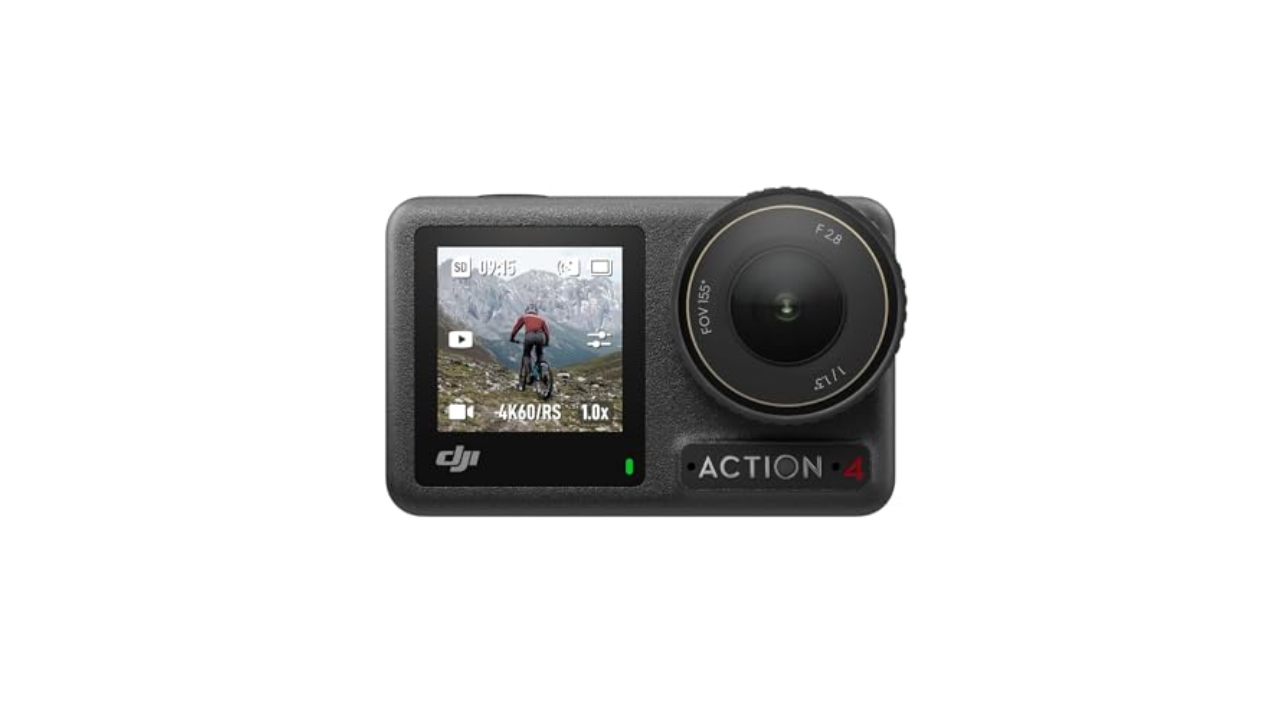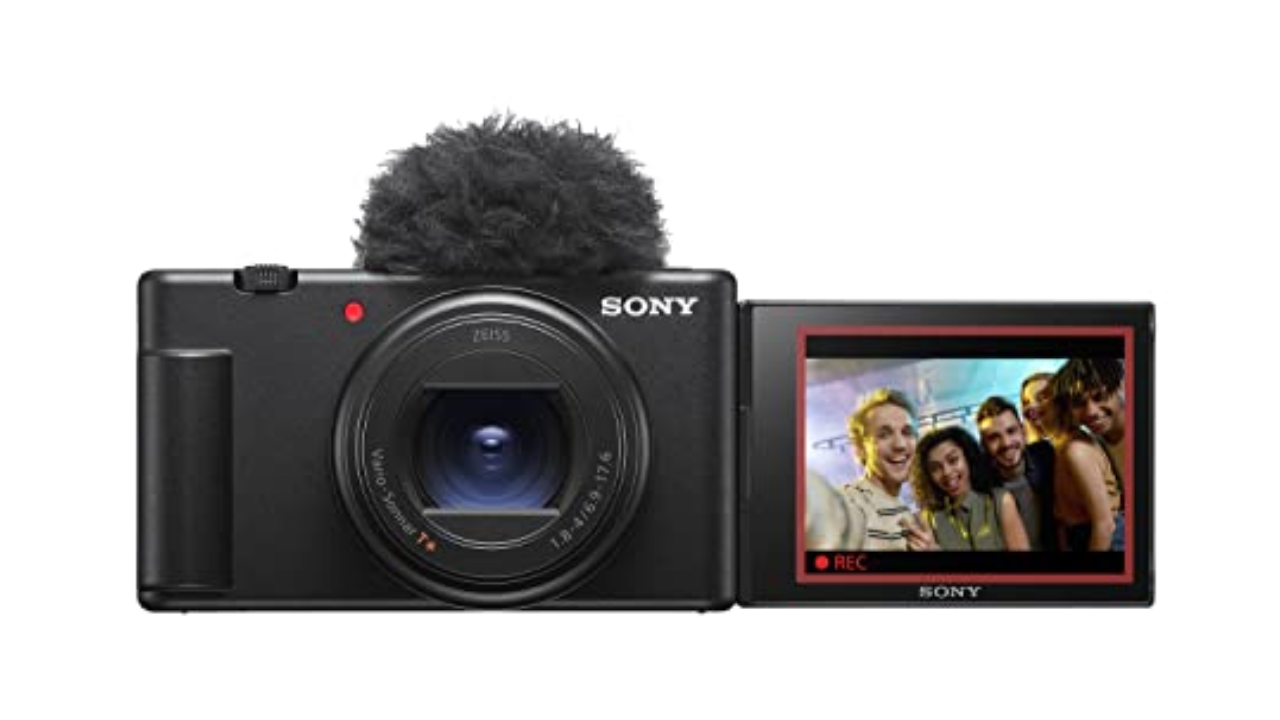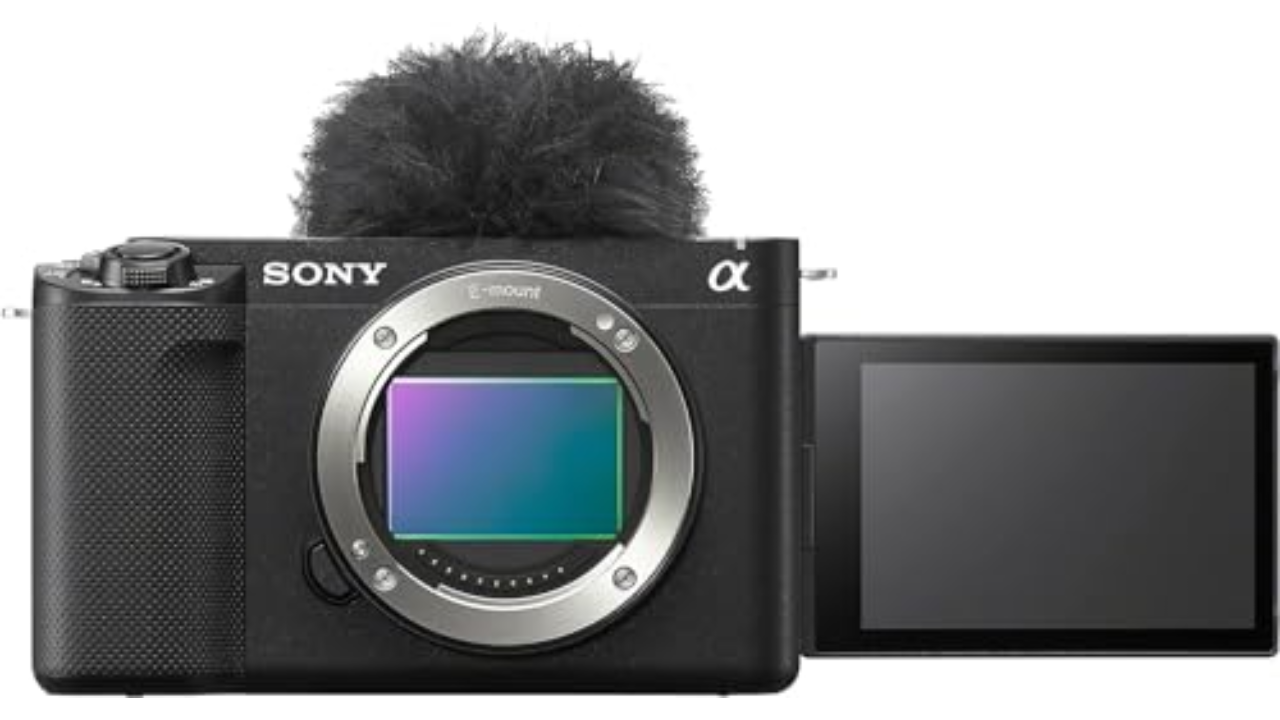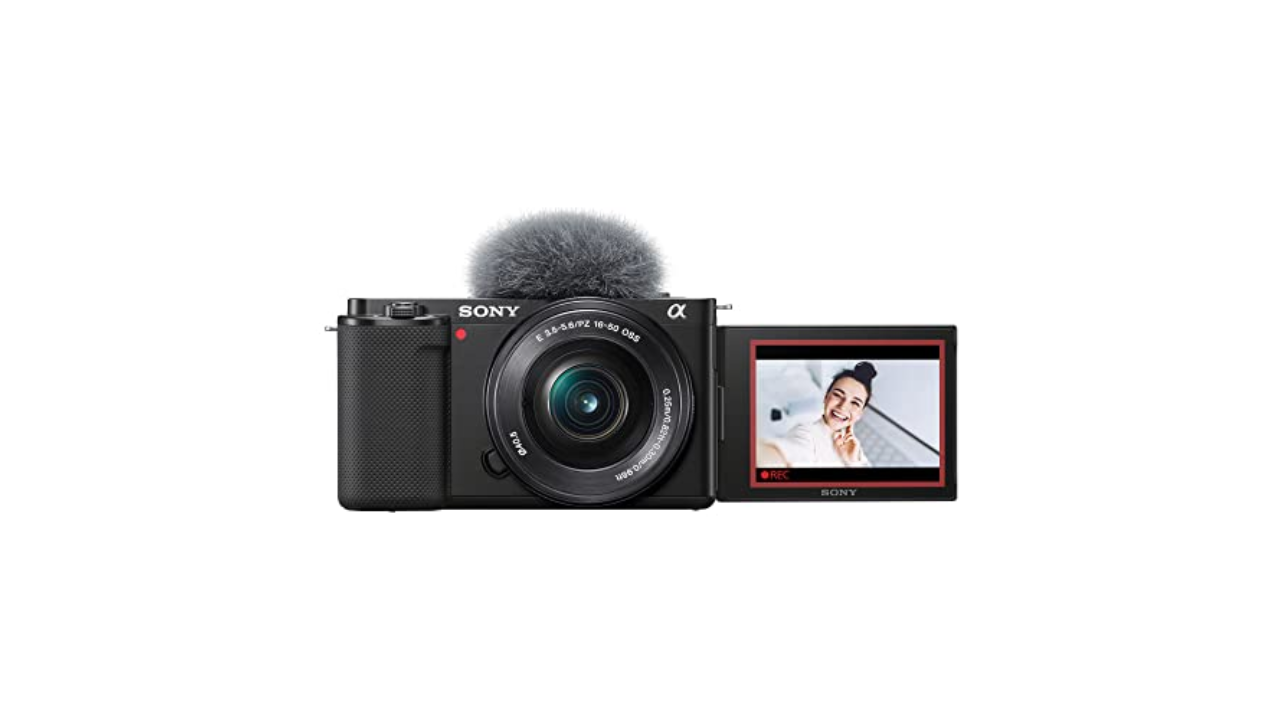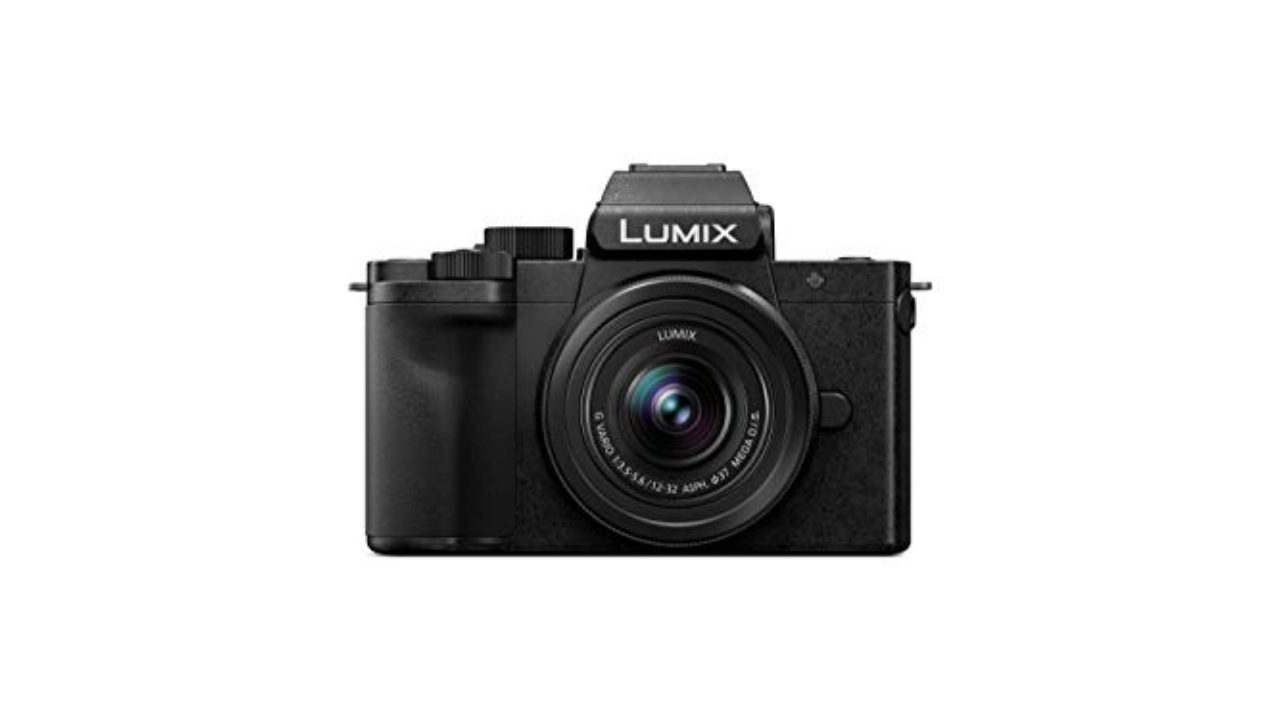The best vlogging cameras for 2024
YouTubers and video pros have never had more choices.
If you’re a content creator or YouTuber, camera companies increasingly want your business. Last year was no exception, with several new vlogging-specific models released by Canon, Sony, DJI and others. That means there are now over a dozen on sale, alongside regular mirrorless cameras that also do the job well.
Models specifically designed for vlogging include Sony’s new ZV-E1 full-frame mirrorless that launched last year, DJI’s Osmo Pocket 3 or Canon’s compact PowerShot V10. Others, like the new Panasonic G9 II and last year’s Canon EOS R6 II are hybrid mirrorless cameras that offer vlogging as part of a larger toolset.
All of them have certain things in common, like flip-around screens, face- and/or eye-detect autofocus and stabilization. Prices, features and quality can vary widely, though. To that end, we’ve updated our guide with all the latest vlogging cameras designed for novice to professional creators, in all price ranges. Engadget has tested all of these to give you the best possible recommendations.
DJI Osmo Pocket III (Creator Combo)
GoPro HERO12 Black
DJI Osmo Action 4
Insta360 X3
Sony ZV-1 II
Canon G7 X Mark III
Panasonic LUMIX G9 II
Sony Alpha ZV-E1
Sony Alpha ZV-E10
Fujifilm X-S20
Panasonic LUMIX G100
Canon EOS R6 II
Nikon Z fc
Factors to consider before buying a vlogging camera
Vlogging cameras are designed for filmmakers who often work alone and either use a tripod, gimbal, vehicle mount or just their hands to hold a camera. It must be good for filming yourself as well as other “B-roll” footage that helps tell your story. The biggest requirement is a flip-around screen so you can see yourself while filming. Those can rotate up, down or to the side, but flipping out to the side is preferable so a tripod or microphone won’t block it.
Continuous autofocus (AF) for video with face and eye detection is also a must. It becomes your camera “assistant,” keeping things in focus while you concentrate on your content. Most cameras can do that nowadays, but some (notably Canon and Sony) do it better than others.
If you move around or walk a lot, you should look for a camera with built-in optical stabilization. Electronic stabilization is another option as long as you’re aware of its limitations. You’ll also need a camera with a fast sensor that limits rolling shutter, which can create a distracting jello “wobble” with quick camera movements.
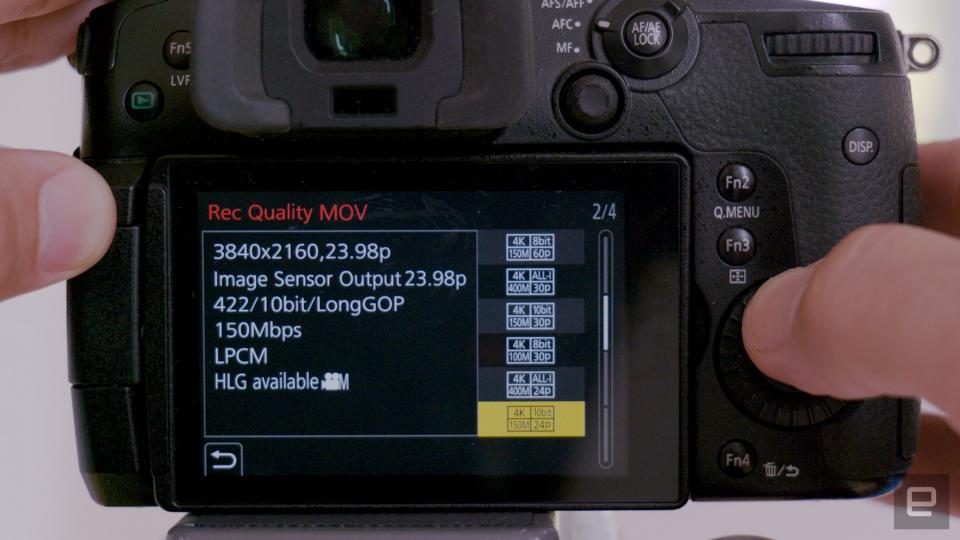
4K recording is another key feature. All cameras nowadays can shoot 4K up to at least 24 fps, but if possible, it’s better to have 4K at 60 or even 120 fps. If you shoot sports or other things involving fast movement, look for a model with at least 1080p at 120 fps for slow-motion recording.
Video quality is another important consideration, especially for skin tones. Good light sensitivity helps for night shooting, concerts and so on, and a log profile helps improve dynamic range in very bright or dark shooting conditions. If you want the best possible image quality and can afford it, get a camera that can record 4K with 10-bits (billions) of colors. That will give you more options when it’s time to edit the footage.
Don’t neglect audio either — if the quality is bad, your audience will disengage. Look for a camera with a microphone port so you can plug in a shotgun or lapel mic for interviews, or at least one with a good-quality built-in microphone. It’s also nice to have a headphone port to monitor sound so you can avoid nasty surprises after you’ve finished shooting.
You’ll also want good battery life and, if possible, dual memory card slots for a backup. Finally, don’t forget about your camera’s size and weight. If you’re constantly carrying one while shooting, especially at the end of a gimbal or gorillapod, it might actually be the most important factor. That’s why tiny GoPro cameras are so popular for sports, despite offering lower image quality and fewer pro features.
The best action and portable cameras
If you’re just starting out in vlogging or need a small, rugged camera, an action cam might be your best bet. In general, they’re easy to use as you don’t have to worry about things like exposure or focus. Recent models also offer good electronic stabilization and sharp, colorful video at up to 4K and 60 fps. The downsides are a lack of control; image quality that’s not on par with larger cameras; and no zooming or option to change lenses.
Late last year DJI unveiled the Osmo Pocket III and I called it “maybe the only vlogging camera you need.” It now has a big 1-inch sensor, the same size found on Sony’s ZV-1 II compact camera. That boosts image quality considerably, particularly in low light. It also has a new, large swiveling touchscreen that makes it easier to switch between horizontal and vertical video.
What really makes it great for vlogging are the follow modes combined with face tracking. If you’re working solo, you can simply set it up and it’ll rotate and tilt to follow you around. That also applies for walk-and-talk vlogging, so you don’t have to worry about focus or even pointing the camera at yourself. The main drawbacks are the reduced resolution (which means it’s not ideal for photos) and a price that’s considerably higher than the previous model.
The Hero 12 Black is a fairly small upgrade over the Hero 11, but is still the best action camera available. You can record videos at up to 5.3K at 60fps in 10-bit color with high data rates, and 8:7 capture that uses the entire sensor now works in all modes. The battery lasts around 10-15 percent longer than before, and it has a new quarter-inch tripod mount. Otherwise, the Hero 12 still has the best digital stabilization (aka Hypersmooth) of any action camera, a full-color front screen and the best image quality, overall, of any action camera – and it’s also reasonably priced.
DJI’s Action 4 is a step down from the GoPro 12 in terms of resolution and stabilization, but it does beat its rival in one key way. It now packs a large 1/1.3-inch sensor (the same one on the Mini 4 Pro and Air 3 drones), which, compared to the 1/1.9-inch sensor on the Hero 12, gives it better low-light image quality. Other key features include 4K 120p video capture (with 10-bit log), a nifty magnetic locking system, compatibility with GoPro accessories and 150 minutes of recording time, with just 18 minutes of charging to get the battery to 80 percent. The downside is the low 12-megapixel resolution and relatively high price.
If it’s 360-degree video you need, with the option to easily convert to regular video, the Insta360 X3 has been a popular choice of late. It’s one of the easiest models to use, has a huge screen and shoots 360 video at 4K 60p, or regular video at 4K 30p. It also has a “Me” video mode that keeps you centered in the frame. The drawback is that its image quality isn’t on par with rivals.
The best compact vlogging cameras
Compact cameras are a step up from smartphones or action cameras, with larger sensors and much better image quality. At the same time, they’re not quite as versatile as mirrorless or DSLR cameras (and not necessarily cheaper) and they lack advanced options like 10-bit video. For folks who want the best possible quality without needing to think too much about their camera, however, they’re the best option.
Sony’s latest compact vlogging camera came out last year to replace the popular ZV-1 and it offers a few key improvements. The ZV-1 II has the same 1-inch, 20.1-megapixel sensor as before, allowing for solid image quality, but now has an 18-50mm (full-frame equivalent) f/1.8-4 lens that’s much wider than the 24-70mm lens on the past model. That means it’s finally wide enough to vlog at arm’s length, particularly since the electronic stabilization crops in on the image.
As before, it offers a lightweight body, built-in high-quality microphone (plus a microphone port), flip-out display, best-in-class autofocus and excellent image quality. It also has vlogging specific features like “product showcase” and background blur. While the $750 ZV-1 can’t shoot 10-bit video, it comes with Sony’s S-Log picture profiles (including a new Cinematic Vlog setting) that give you increased dynamic range for shooting in challenging lighting conditions. If you’re a creator looking to step up from a smartphone, it does the job nearly perfectly.
Canon’s G7 X Mark III should also be front of mind for vloggers looking for a compact option. It also packs a 20-megapixel 1-inch sensor, but has a 24-100 mm f/1.8-2.8 35mm equivalent zoom — quite a bit longer than the ZV-1 at the telephoto range. It can shoot 4K at up to 30 fps, while offering optical image stabilization, a microphone input (though no headphone jack) and even the ability to livestream directly to YouTube. The downsides are contrast-detect only autofocus and a screen that tilts up but not to the side. For $679, it’s still a great option, though.
The best mirrorless/DSLR vlogging cameras
This is the class that has changed the most over the past couple of years, particularly in the more affordable price categories. Interchangeable lens cameras give you the most options for vlogging, offering larger sensors than compact cameras with better low-light sensitivity and shallower depth of field to isolate you or your subject. They also offer better control of your image with manual controls, log recording, 10-bit video and more. The drawbacks are extra weight compared to action or compact cameras, more complexity and higher prices.
Panasonic’s G9 II is the company’s first Micro Four Thirds camera with phase-detect autofocus and is now the company’s best vlogging camera in that sensor category by far. Given its price, I think it’s the best vlogging camera overall as well. That’s down to the significantly improved autofocus that eliminates the wobble of past models, along with high-end video specs like 5.7K 60p or 4K 120p 10-bit V-log capture. The built-in stabilization reduces shake by up to 8 stops and is highly effective even when walking. Other features for vloggers include a flip-out display, direct SSD capture and more.
It’s also worth a look at the GH5 Mark II, which is not only cheaper but particularly well suited for live-streamers. It’s not a huge upgrade over the GH5, but does more than most rival cameras for the price, offering 4K 10-bit 60p video, a fully articulating display and excellent in-body stabilization. As with the GH6, the main drawback is the contrast-detect autofocus system.
Sony has no less than five models in its content-creator ZV lineup, and the ZV-E1 is its latest and most capable by far. Based on the video-centric A7S III, it has an outstanding feature set for video including 10-bit 4K at up to 120p, and is a low-light champ to boot. It also offers cool AI features like auto-framing and dynamic stabilization that are very handy for vloggers. The main drawback is a lack of sharpness, but at a price $1,300 cheaper than the A7S III, it’s a highly recommended vlogging camera.
The best Sony APS-C camera for vlogging is now the ZV-E10. While using many of the same aging parts as the A6100, including the 24.2-megapixel sensor, it has a number of useful features for self-shooters. High on the list is Sony’s excellent autofocus, which includes the same background defocus and Product Showcase features found on the ZV-1 compact. It also offers electronic SteadyShot, a fully articulating display and more. The biggest drawback is rolling shutter that can get bad if you whip the camera around too much. If you can find one, it’s priced at $700 for the body or $800 in a bundle with Sony’s 16-50mm F/3.5-5.6 power zoom lens.
Much like the X-S10, Fujifilm’s 26-megapixel X-S20 is a solid APS-C hybrid camera that ticks nearly all the boxes for vloggers. Features include in-body stabilization (now upgraded to seven stops), 10-bit 4K external video with F-Log and F-Log 2 recording (at up to 60fps) along with 1080p at a stellar 240 fps, a screen that flips out to the side and easy-to-use controls. It also comes with a headphone jack and USB-C port that doubles as a headphone jack. The main downside is the limited touchscreen controls, but you get a lot of camera for the price.
Panasonic’s G100 is purpose built for vlogging like the ZV-1, but also allows you to change lenses. It has a fully-articulating flip-out screen, 5-axis hybrid (optical/electronic) stabilization, 4K V-Log-L video at up to 30 fps (though sadly cropped at 1.47X for 4K video), 1080p at up to 60 fps, and contrast detect AF with face/eye detection. The coolest feature is the Nokia OZO system that can isolate audio to a specific person via face-detection tracking — something that can theoretically improve audio quality.
Canon’s EOS R6 II is the company’s mainstream full-frame mirrorless camera, offering some nice features for content creators. Video specs are solid, with full sensor 4K supersampled from 6K at up to 60 fps. Autofocus is quick and more versatile than ever thanks to expanded subject detection. It’s still not quite up to Sony’s standards, though, and the micro HDMI and lack of a CFexpress slot isn’t ideal.
If you want to look great while vlogging, check out Nikon’s stylish Z fc. It’s largely identical to the Z50, with features like a 20.9-megapixel APS-C sensor, 4K at 30 fps and a reliable phase-detect autofocus system with face detection. However, the Z fc brings a vari-angle touchscreen to the party and has a beautiful vintage body covered with convenient manual controls. It doesn’t have built-in optical stabilization, but you can get that via a lens. The best feature, though, is the price – you can get one for around $1,100 with a 16-50mm lens.








